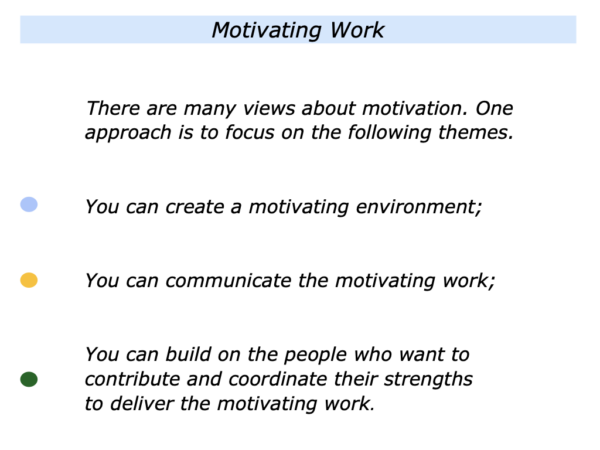
There are many views about motivation. One approach says that leaders should be able to understand the motivational triggers in each person. This sounds okay but it can be challenging.
Different people are motivated by different things. Bearing this in mind, it can be difficult to find and reach these individual motivational triggers in large groups of people. Let’s look at another approach.
Imagine that you lead an organisation. If appropriate, you can take the following steps.
First, you can create a motivating environment.
Second, you can communicate the motivating work.
Third, you can build on the people who want to contribute and
coordinate their strengths to deliver the motivating work.
Imagine that you want to follow this approach in your own way. Let’s explore how you can translate this into action.
You can create a
motivating environment
Good leaders aim to create a positive environment in which motivated people can do superb work. Different leaders do this in different ways. Some take the following steps.
Such leaders act as good models. They are positive, predictable and make people feel welcome. They continually communicate the organisation’s purpose, principles and picture of success.
They employ people who aim to be positive and professional. They keep showing what good looks like by producing success stories that highlight when people have performed superb work to deliver the goods.
They encourage people to keep following the principles and reward the behaviour they want repeated. They protect the culture by acting quickly if people behave in an unprofessional way.
Good leaders make the professional deal clear. They communicate both the organisation’s and individual’s responsibilities in working towards the goals.
They encourage people to build on their strengths and make their best contributions. At the same time, they expect people to behave in an adult way when working to achieve the goals.
Imagine that you have created a positive and motivating environment in your own way. You may then move on to the next stage.
You can communicate
the motivating work
Good leaders recognise that superb workers often commit themselves to doing motivating work. Different people may, of course, do different kinds of such work. Let’s look at some examples.
They may be motivated to do medical work in an Accident & Emergency Unit;
They may be motivated to do scientific work to find a vaccine for a disease;
They may be motivated to develop technical solutions that help people to simplify their lives;
They may be motivated to build a pioneering prototype they enables people to achieve success;
They may be motivated to do other kinds of work that cares for people or the planet.
Different people follow this approach in different ways. One leader expressed this in the following way.
“My job is to create a motivating environment and mission. Sometimes it is also to show how doing a piece of challenging work will contribute to achieving our picture of success.”
Good leaders also describe the benefits of achieving the goals. Some do this by communicating the What, Why, How, Who and When. If appropriate, you may follow elements of this framework in your own way.
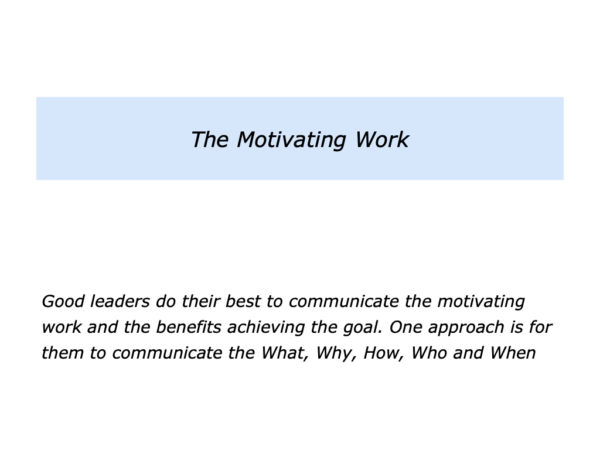
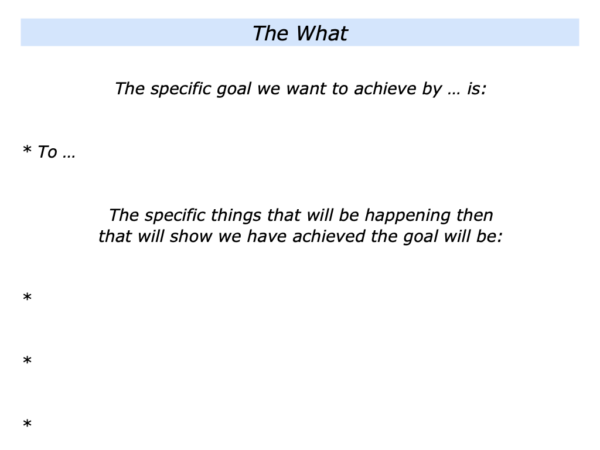
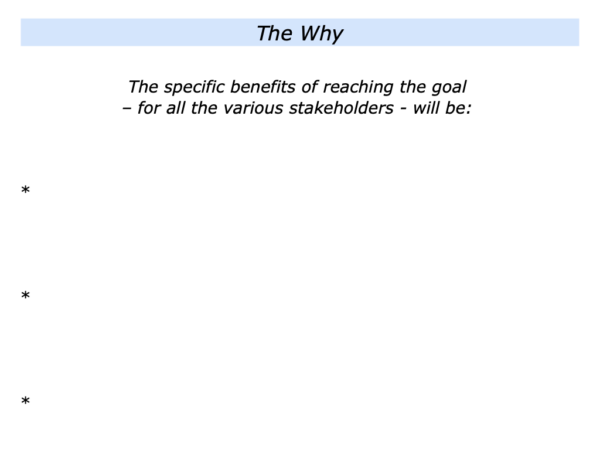
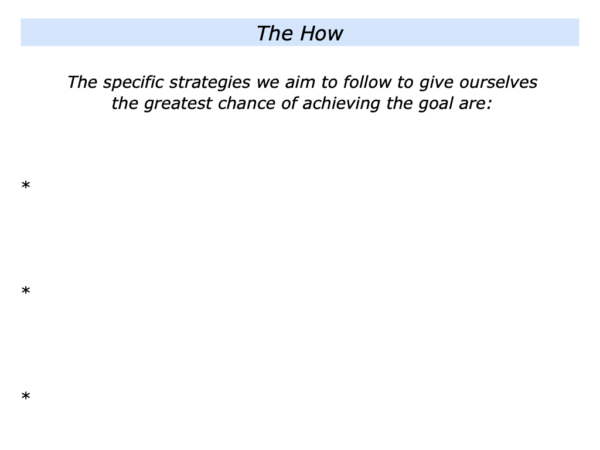
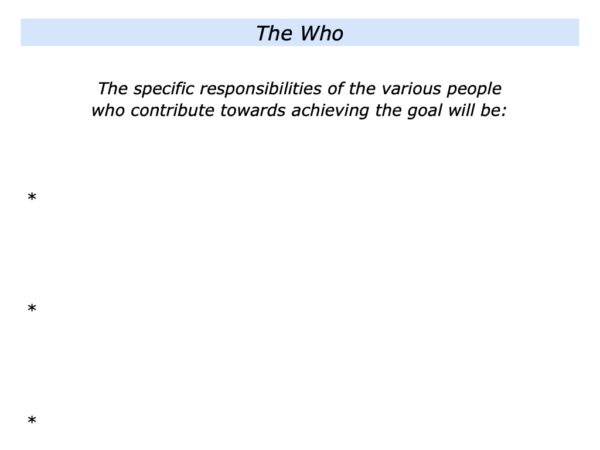
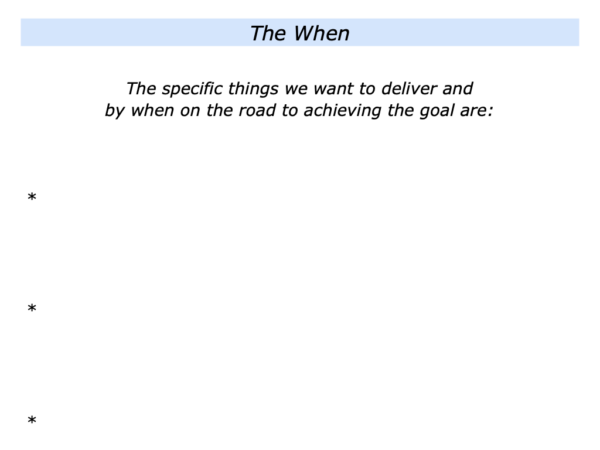
Imagine that you have communicated the piece of work. It will then be time to move on to the next stage.
You can build on the people who want
to contribute and coordinate their
strengths to deliver the motivating work
Good leaders build on the people who aim to be positive, professional and do their best to deliver peak performances. Bearing this in mind, such leaders often take then following steps.
They communicate the piece of motivating work and describe the benefits of achieving the goal;
They give people the opportunity to decide if they want to contribute towards achieving the goal;
They build on the people who want to help, make clear contracts about their contributions and coordinate their strengths to achieve the goal.
Such leaders believe in the voluntary principles. They believe in building on the people who choose to opt in and make their best contributions.
They can then aim: a) to build on the positive energy of the people who want to help; b) to make clear working contracts; c) to manage by outcomes and enable people to perform superb work.
There may be objections to this approach. One objection may be voiced in the following way:
“What happens if some people do not want to opt in?”
Such a leader may then answer this in the following way.
“My job is to create a motivating environment and mission. I will build on the people who want to contribute because this is an approach that works.
“If some people do not want to contribute, that is their choice. If this is a pattern they repeat, however, then there may be consequences. I may need to do the following things.
“First, to make sure I am doing my part in building a positive environment and describing the organisation’s purpose, principles and picture of success.
“Second, to clarify the patterns of any people who choose not to contribute and whether they are following the organisation’s principles to perform superb work.
Third, to clarify whether they want to follow the organisation’s principles and, depending on the outcome, then make a decision about whether they can contribute in the future.
“Bearing all this in mind, I will build on the people who want to contribute and enable them to achieve the goal.”
Imagine that you are aiming to follow this approach in your own way. As mentioned above, the next step will be to coordinate people’s strengths to achieve the goal.
Good leaders sometimes take the lead role in the coordination process. Sometimes they have a central coordinator, however, who reports to them and acts as the main mission holder.
There are many ways to channel people’s efforts. Bearing this in mind, however, here are some of the principles following by good coordinators.
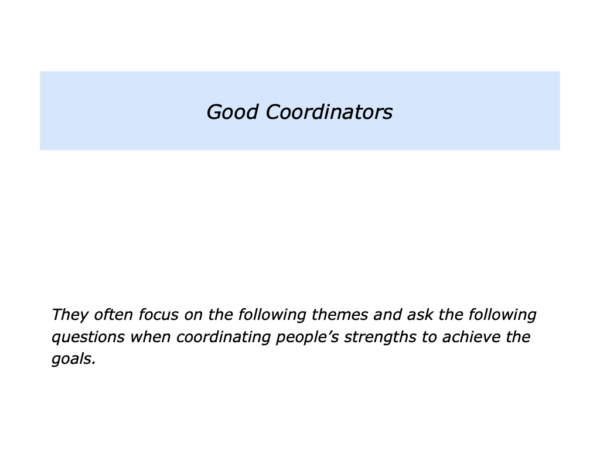
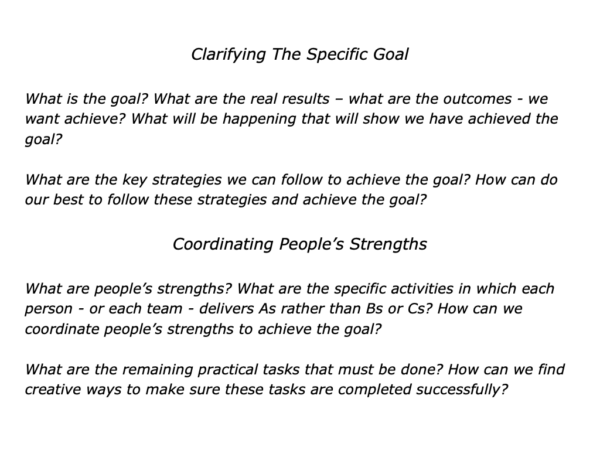
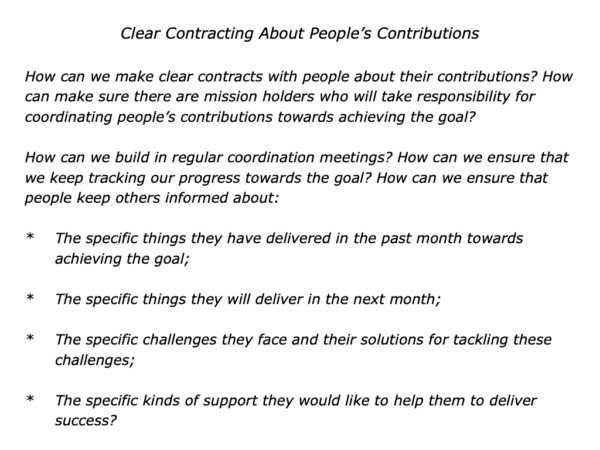
Imagine that you have embarked on this stage. One approach is to focus on the following themes when coordinating people’s strengths to achieve the goal. You can aim:
To make clear contracts about the outcomes that each person – or each team – will deliver and give them the support they need to do the job;
To manage by outcomes and enable them to perform superb work on the road to achieving the goal;
To encourage the people and teams to proactively keep you and others informed about their progress towards delivering their part of the goal.
Good leaders keep people informed about the overall progress towards achieving the goal. One approach is to have regular sessions with people – such as each month – where they focus on the following themes.
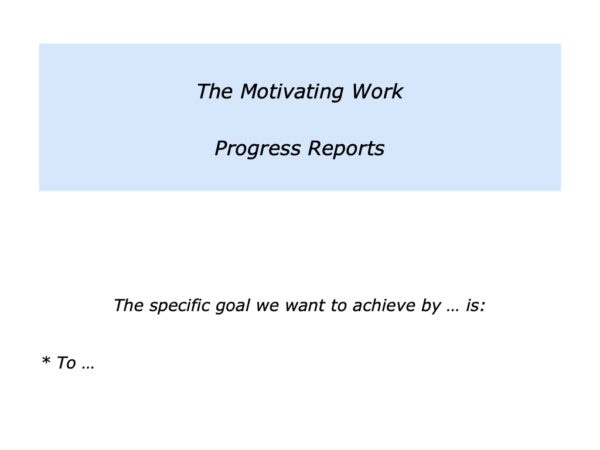
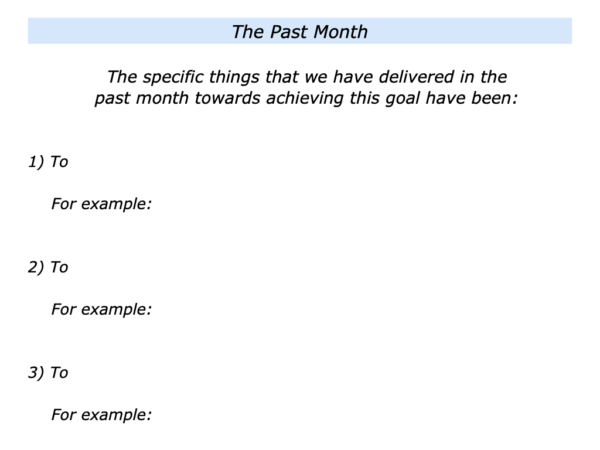
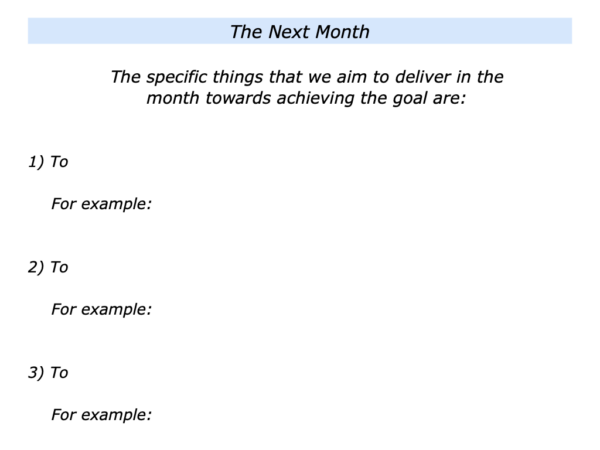
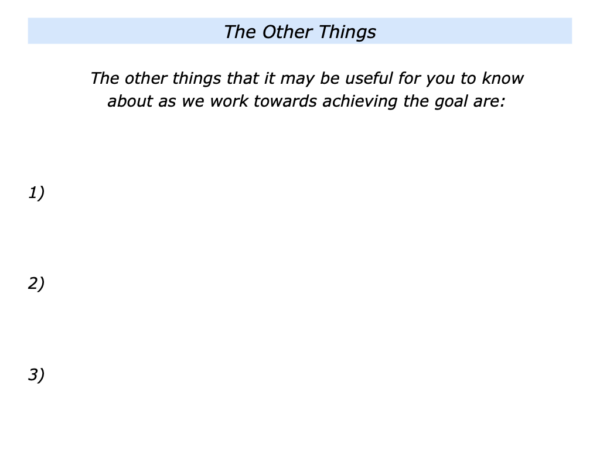
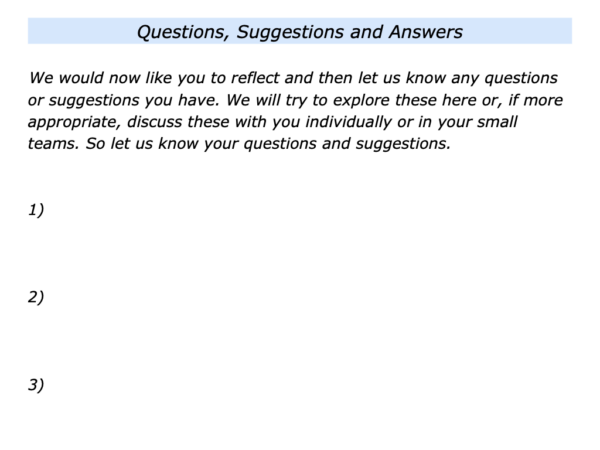
Imagine that you are following elements of this approach. You can encourage people to perform superb work, find solutions to challenges and finish properly to deliver the goal.
There are many views about motivation. This piece has explored how to communicate a motivating goal. It is then to build on the people who want to contribute and enable them to deliver the goods.
Let’s return to your own work. Can you think of a situation where you may want to follow elements of this approach? How can you do this in your own way?
If you wish, try tackling the exercise on this theme. This invites you to complete the following sentences.
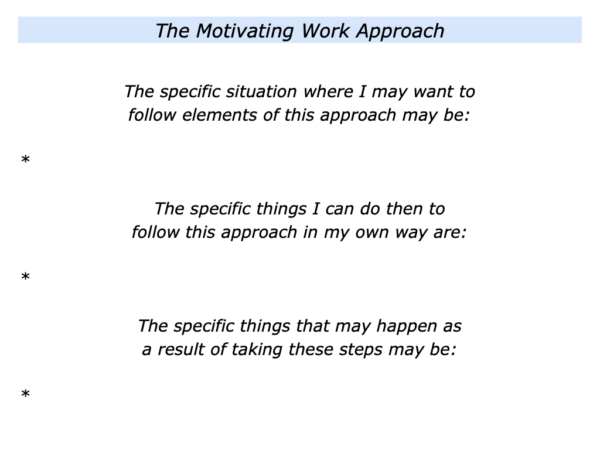






Leave a Reply